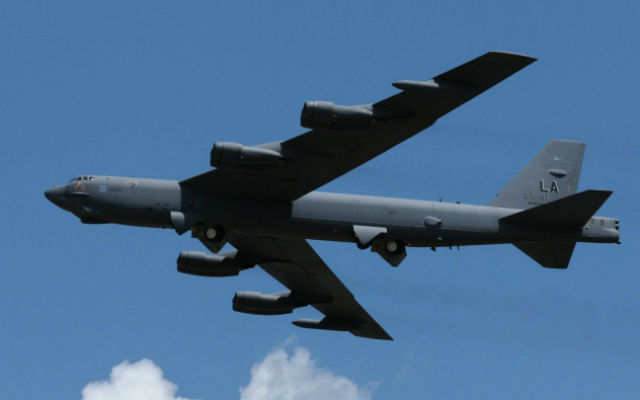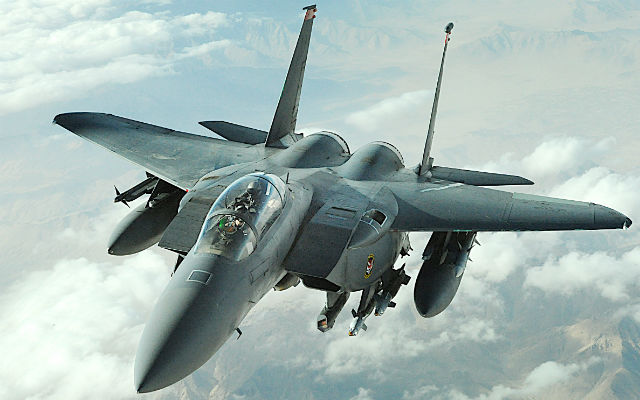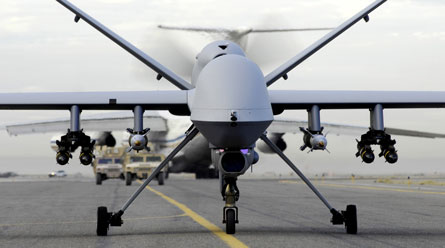President Barack Obama has authorised US personnel to conduct air strikes over Iraq and target Islamic insurgents advancing in their occupation of the region.
In a speech at the White House on 7 August, Obama said air strikes could be carried out to protect American citizens assisting the Iraqi government in tackling the insurgent uprising in Iraq and Syria.
“In recent days these terrorists have continued to move across Iraq, and have neared the city of Erbil, where American diplomats and civilians serve at our consulate and American military personnel advise Iraqi forces,” Obama says. “To stop the advance on Erbil, I’ve directed our military to take targeted strikes against ISIL [Islamic State in Iraq and the Levant] terrorist convoys, should they move toward the city.”
ISIL is a splinter group of an array of terrorist organisations including Al-Qaeda, and has been occupying areas of Iraq and Syria in an attempt to create an extreme Islamic stronghold in the region.
Obama says the USA will “stay vigilant” and take action if the militants threaten any personnel stationed in Iraq.
The president claims, however, that this does not mark the USA’s intention to re-engage in a conflict in Iraq: "Even as we support Iraqis as they take the fight to these terrorists, American combat troops will not be returning to fight in Iraq.
“However, we can and should support moderate forces who can bring stability to Iraq.””

US Air Force
Another catalyst for the decision is the displacement of thousands of Iraqi civilians from religious minorities, who are now stranded on a mountainside in the Sinjar region of Iraq.
These people fled as a result of militants occupying the Yezidi town of Sinjar, and the Iraqi government has requested US intervention to aid in rescue efforts.
“I’ve authorised targeted airstrikes, if necessary, to help forces in Iraq as they fight to break the siege of Mount Sinjar and protect the civilians trapped there,” Obama adds.
“Already, American aircraft have begun conducting humanitarian airdrops of food and water to help these desperate men, women and children survive. Today, America is coming to help.”
He added that the USA is consulting with other countries and the UN – which has called for action to address the humanitarian crisis.
The choice of platforms to be used depends on whether or not the Iraqi government has authorised the basing of US aircraft in situ.
If it has, the US Air Force’s Boeing F-15s, Lockheed Martin F-16s and Fairchild Republic A-10 strike aircraft could be utilised.

US Air Force
If access is not granted, however, other options could be to station out of Incirlik air base in Turkey, or the Royal Air Force base at Fairford in the UK, which serves as another USAF base.
If the latter is utilised the USAF’s bomber fleet could be deployed, including its Boeing B-52 or B-1s and Northrop Grumman B-2s.
Another strike potential would be to use aircraft operating from a US Navy aircraft carrier.
In July it was announced by Pentagon press secretary Rear Adm John Kirby that the USAF had started conducting armed unmanned air vehicle operations over Baghdad to protect the deployed advisers.
The UAVs are operating alongside armed manned aircraft, and are flying 30-40 missions a day, with the data collected being shared with Iraqi forces.

US Air Force
Although Kirby did not stipulate which UAVs are being used, the USAF’s most combat-proven unmanned armed capability is the General Atomics Aeronautical Systems MQ-9 Reaper.
Baghdad is also moving closer to receiving other airborne strike and reconnaissance capabilities following international deliveries in recent months.
These include delivery in the USA of the first of 36 Lockheed Martin F-16IQ Block 52 fighters on 5 June – although further deliveries have been suspended due to instability in Iraq – as well as five Sukhoi Su-25 ground attack aircraft from Russia that were delivered on 28 June.
Source: FlightGlobal.com



















